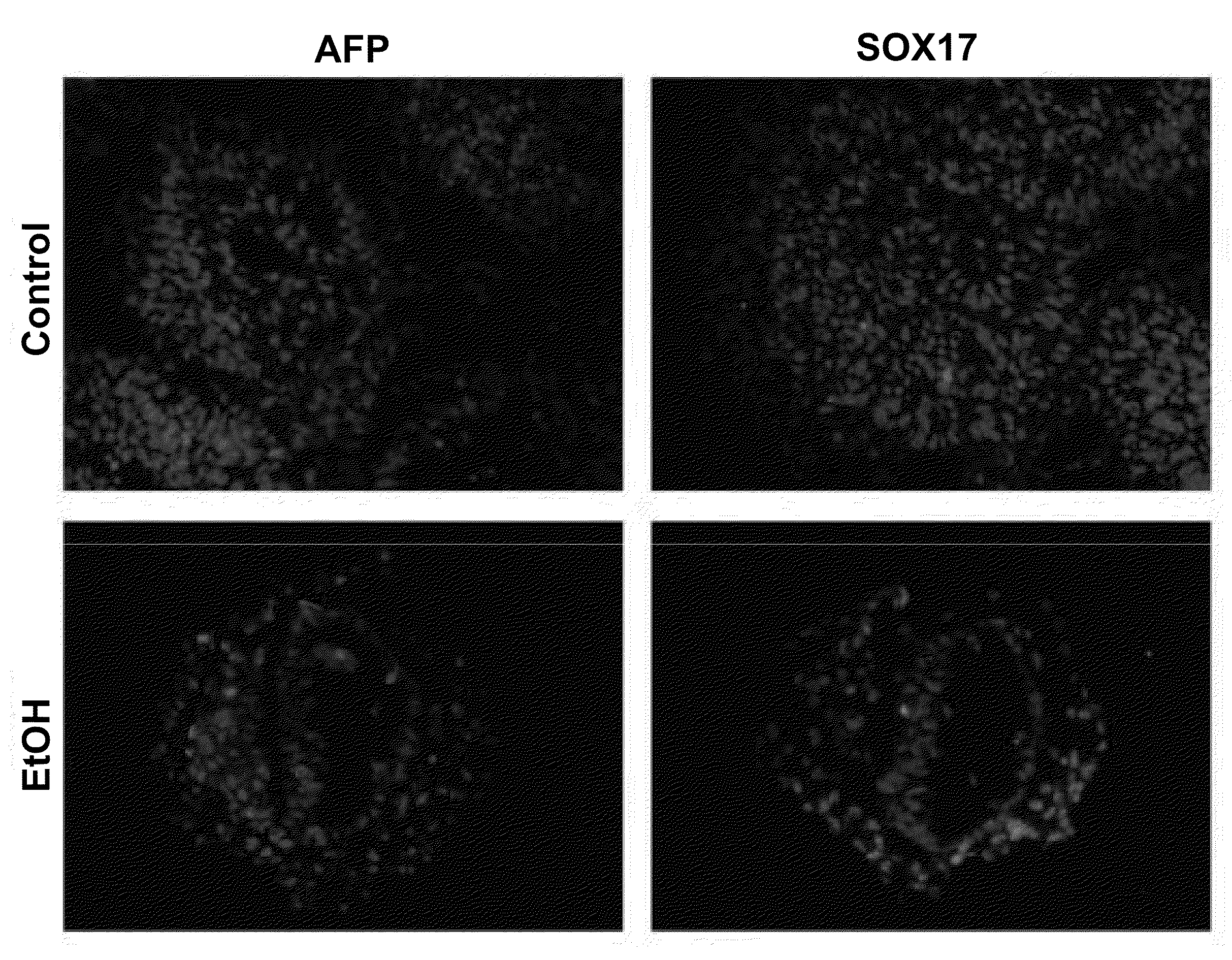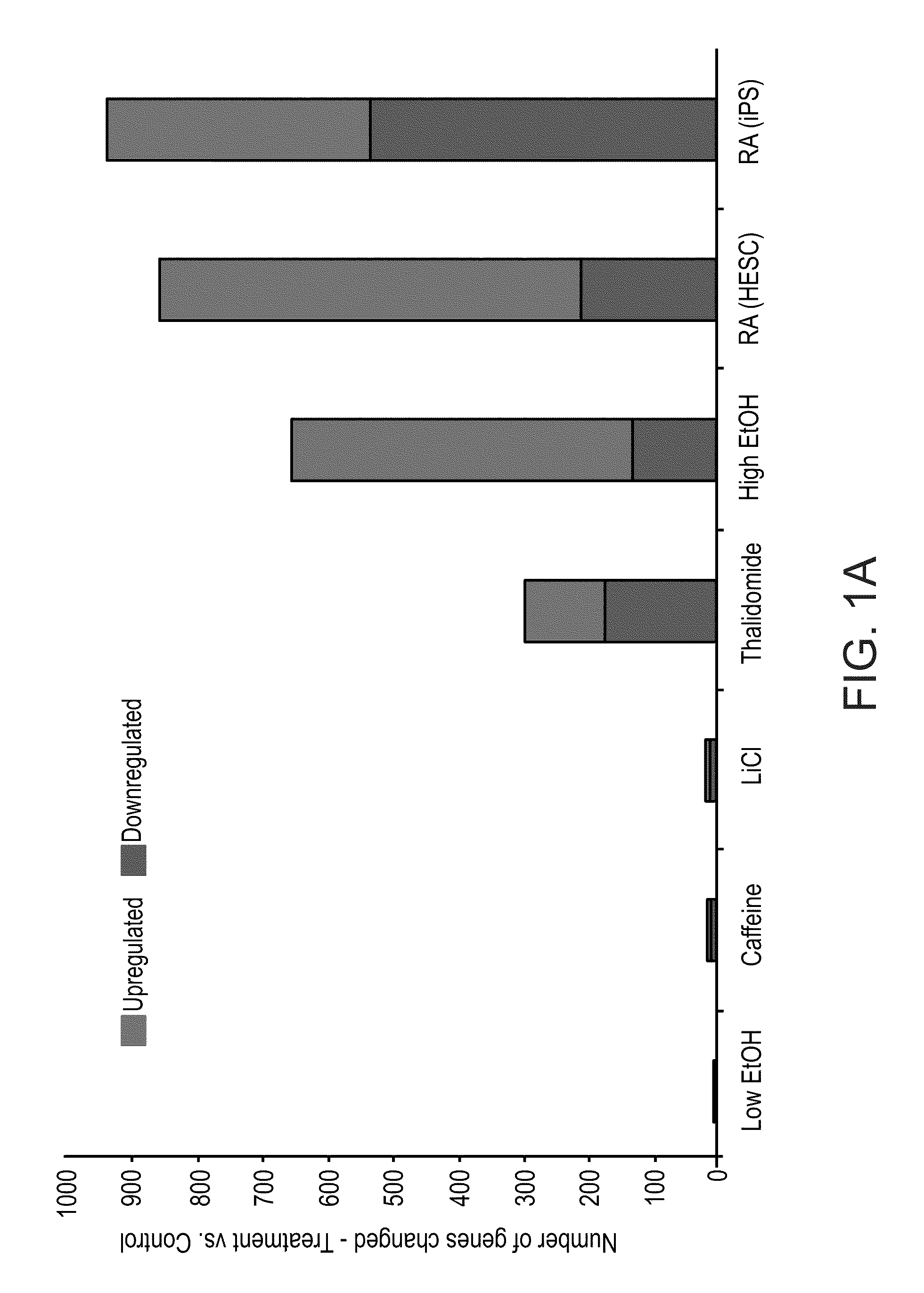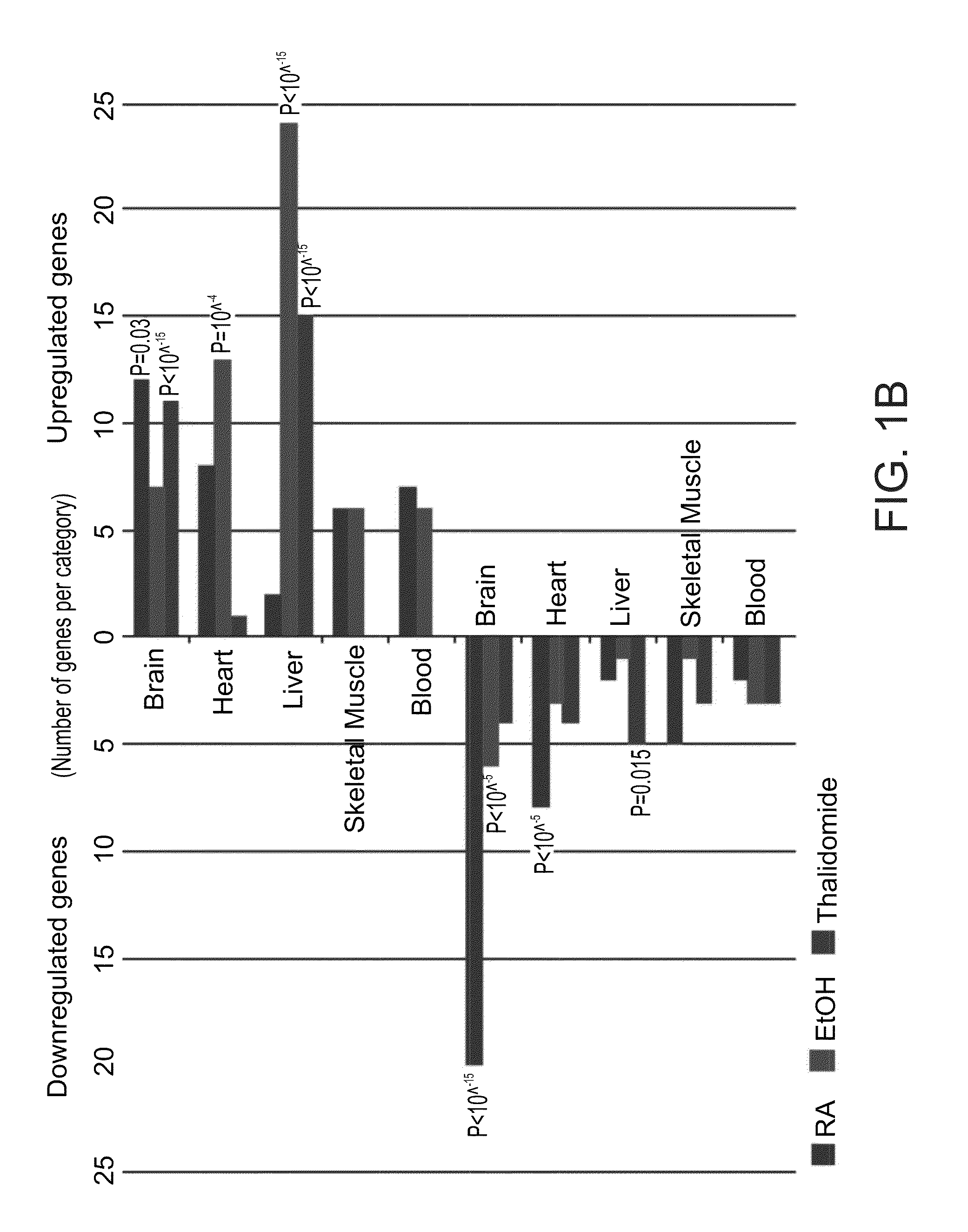Methods and kits for ascertaining biosafety of an agent
a biosafety and agent technology, applied in the field of methods and kits for ascertaining biosafety of agents, can solve the problems of large number of laboratory animals, high labor intensity and cost, and significant differences between humans and animal models in their response to chemical substances
- Summary
- Abstract
- Description
- Claims
- Application Information
AI Technical Summary
Benefits of technology
Problems solved by technology
Method used
Image
Examples
example 1
Treatment with Human Teratogens Leads to Major Global Gene Expression Changes in Human Embryoid Bodies
[0148]In this example, developing EBs were treated for seven days with various teratogens at concentrations corresponding to documented human serum levels [8,21]. Caffeine as a negative control was used at a concentration shown to induce malformations in mice [17]. Following treatment, gene expression was analyzed using DNA microarrays. Expression results were analyzed relative to their respective untreated controls and genes whose expression was significantly changed (over two-fold) were counted. Lithium, caffeine and 0.5% ethanol produced little or no effect. Higher doses of ethanol (1.5% and 2%), RA and thalidomide had more dramatic effects with several hundred probesets changing in their levels of expression (FIG. 1A). It will be appreciated that in the case of low dose of ethanol, technical difficulties were experienced and the present inventors believe that the high evaporatio...
example 2
Functional Analysis of Retinoic Acid, Thalidomide, and Ethanol Affected Genes
[0152]To further characterize the molecular events induced by ethanol, RA and thalidomide, Gene Ontology based functional annotation was performed [22] (FIG. 2). Of the categories enriched in genes upregulated by RA are the homeobox protein genes (14.1 fold above expected frequency). Hox genes of the Homeobox gene family are key regulators of many developmental processes and are known to be directly regulated by RA signaling [23]. Hox genes have been shown to be expressed in vertebrates along the dorsal axis in a spatially and temporally regulated manner, such that the 3′ located genes are expressed earlier and in the anterior regions, while the 5′ located genes are expressed later on and in the posterior parts of the embryo. In the present analysis it has been shown that the anterior HoxA and HoxB genes are specifically upregulated by RA treatment both in HESC and HiPSC EBs (FIG. 3A). In the ethanol treate...
example 3
Retinoic Acid and Ethanol Alter Differentiation of Treated EBs as Predicted by Gene Expression Profiling
[0153]In order to validate the microarray results and characterize the observed effects at the cellular level, immunofluorescent labeling was performed on the treated EBs. Using this method two major cellular effects previously highlighted by mRNA expression analysis were examined. Specifically, the protein levels of the fetal liver specific gene AFP and the earlier endodermal marker SOX17 were examined to assess the effects of ethanol treatment. The effect of RA treatment on neural differentiation was determined using antibodies for the HOXA1 protein and the neuronal specific protein NCAM1.
[0154]Ethanol treatment clearly caused elevation of AFP staining, as was expected from the dramatic increase in mRNA levels shown by the microarray analysis. Interestingly, there was also dramatic increase in SOX17 staining (FIGS. 4A-D). This would suggest that ethanol acts to increase differen...
PUM
| Property | Measurement | Unit |
|---|---|---|
| Fraction | aaaaa | aaaaa |
| Fraction | aaaaa | aaaaa |
| Fraction | aaaaa | aaaaa |
Abstract
Description
Claims
Application Information
 Login to View More
Login to View More - R&D
- Intellectual Property
- Life Sciences
- Materials
- Tech Scout
- Unparalleled Data Quality
- Higher Quality Content
- 60% Fewer Hallucinations
Browse by: Latest US Patents, China's latest patents, Technical Efficacy Thesaurus, Application Domain, Technology Topic, Popular Technical Reports.
© 2025 PatSnap. All rights reserved.Legal|Privacy policy|Modern Slavery Act Transparency Statement|Sitemap|About US| Contact US: help@patsnap.com



